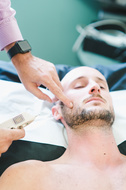
I have been hearing from several practitioners who are thinking of raising their rates. This is something that is necessary especially now given inflation. Before you decide to raise your rates, consider the following:
1) Why are you raising your rates? One thing to focus on more than raising rates is getting more patients AND patient visits. Are you doing a good job with scheduling supportive care visits long-term? How many new patients are you getting every week? Are you at your target weekly visits? If you are underperforming in those areas, then raising rates is NOT a good way to make up for it. And maybe it isn't time to raise your rates. Don't raise your rates if your clinic is underperforming. Fix that problem first.
2) Having more patients on the books can = lower increase in rates. If you have 400 patients a month and raise your rates by $5.00, that is not much of a shock to the patient, yet it means $2000 more revenue per month, and $24,000 more per year. When you have more patients, you can have a modest increase in rates and still make up a lot for inflation and increased costs.
3) Similar to #2, is your practice flow working? Are you working out of 1 room? Or are you running multiple rooms and multiple patients an hour? Having an ideal practice flow may mean the ability for a more modest rate increase while getting more bang for your buck.
4) Are your patients able to afford your services now? If patients are balking at coming in more than once per week, is it financial? If you are charging $150 a visit, is it realistic for someone to coming in 2-3 times per week for 3-4 weeks? And even if they start, are they going to finish? Or are they going to drop out of care and not finish their treatment plans? Again, have an efficient practice and you can see more patients, charge a rate they can handle, see them more often and get the revenue you need. It's a win-win. (keep in mind a lot of patients claim they are broke and they aren't, but there is a tipping point and most people are paying out of pocket).
5) Cutting expenses first: Anthony mentioned this in his post above. We get lost with our subscriptions and not shopping around for better rates on things like insurance. It is easy to save $30, $50, or $100 or more per month. Just DON'T cut your subscription to the locals community since it actually makes you money. 🙂

Athletic Intensive Myofascial Release
Location: Shokunin CrossFit, Mesa, AZ
Pre-requisite: EXSTORE
Register here:
https://aseseminars.com/event/athletic-intensive-myofascial-seminar/
Looking forward to seeing everyone!
12/13 12:30pm EST: https://us02web.zoom.us/j/82314150269

every once in a while I will have a very overweight patient with neck tension. The fat near the neck makes it hard to always have the most accurate placement of what I am looking to do since it rolls in prone. Sometimes i will just needle with them sitting. Any suggestions for easier needling?
Can you post a list of all the courses available on ASE seminars? the sorting normally needs specific names of the course to find it but I am looking to just see all the topics that ASE seminars covers. I am looking to create a list of articles that can be created based upon the courses that are taught here. A course that is taken can have an article created from it explaining to patients why they are in the right place. These articles can reduce costs of advertising over time by making a person a local authority with google using its algorithm to send you traffic. We aren't giving direct treatment strategies but overview articles it seems to guide purchase.
Example : Difficulty to Rank /100 : Volume of Searches a month you are part of by writing an article that ranks well
Sciatica / 72 Difficulty / 450,000 searches
Anxiety / 95 difficulty / 368,000 searches
carpal tunnel / 63 difficulty / 301,000 searches
low back pain / 65 difficulty / 246,000 searches
Tennis elbow / 75 difficulty / 165,000 ...














